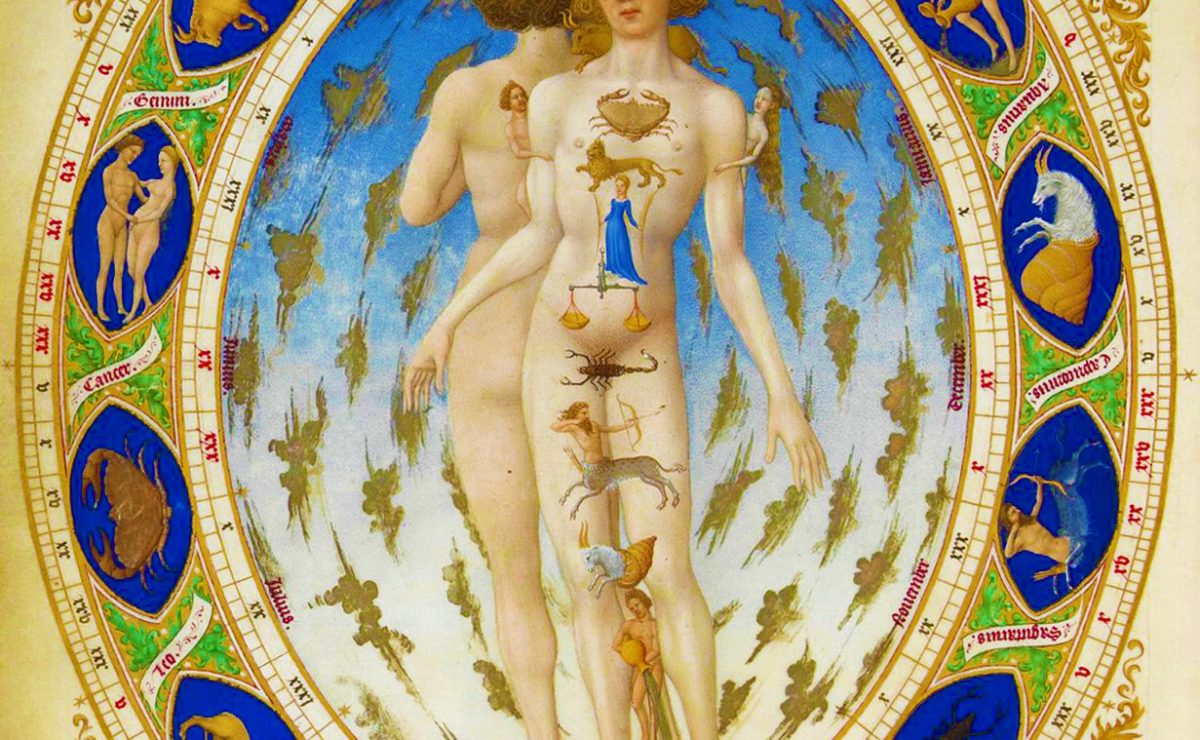The Ancient astrologer’s believed that the zodiac formed the body of the Grand Man of the Universe. This body, which they called the Macrocosm (the Great World), was divided into twelve major parts, one of which was under the control of the celestial powers reposing in each of the zodiacal constellations. Believing that the entire universal system was epitomized in man’s body, which they called the Microcosm (the Little World), they evolved that now familiar figure of “the cut-up man in the almanac” by allotting a sign of the zodiac to each of twelve major parts of the human body.
Given this fundamental belief, European physicians until the 17th century based the practice of medicine on celestial computations, also known as Iatromathematics, astrological medicine or astromedicine. They therefore utilized planetary transition tables called ephemerides or Alfonsine tables to cast a prognostication–meaning a disease outcome prediction based on astrological conjunctions, alignments and the angle between Planets (Aspects)–prior to perform venesection, cupping, cautery, surgery or to prescribe medicines with specific astral powers.25 Disease was then believed to result from interruptions to the flow of the numinous life-force pneuma and an imbalance in the four humors–blood, yellow bile, black bile and phlegm–which were each associated to an element, a planet, a color, etc, according to European correlative cosmology.


Leave a Reply